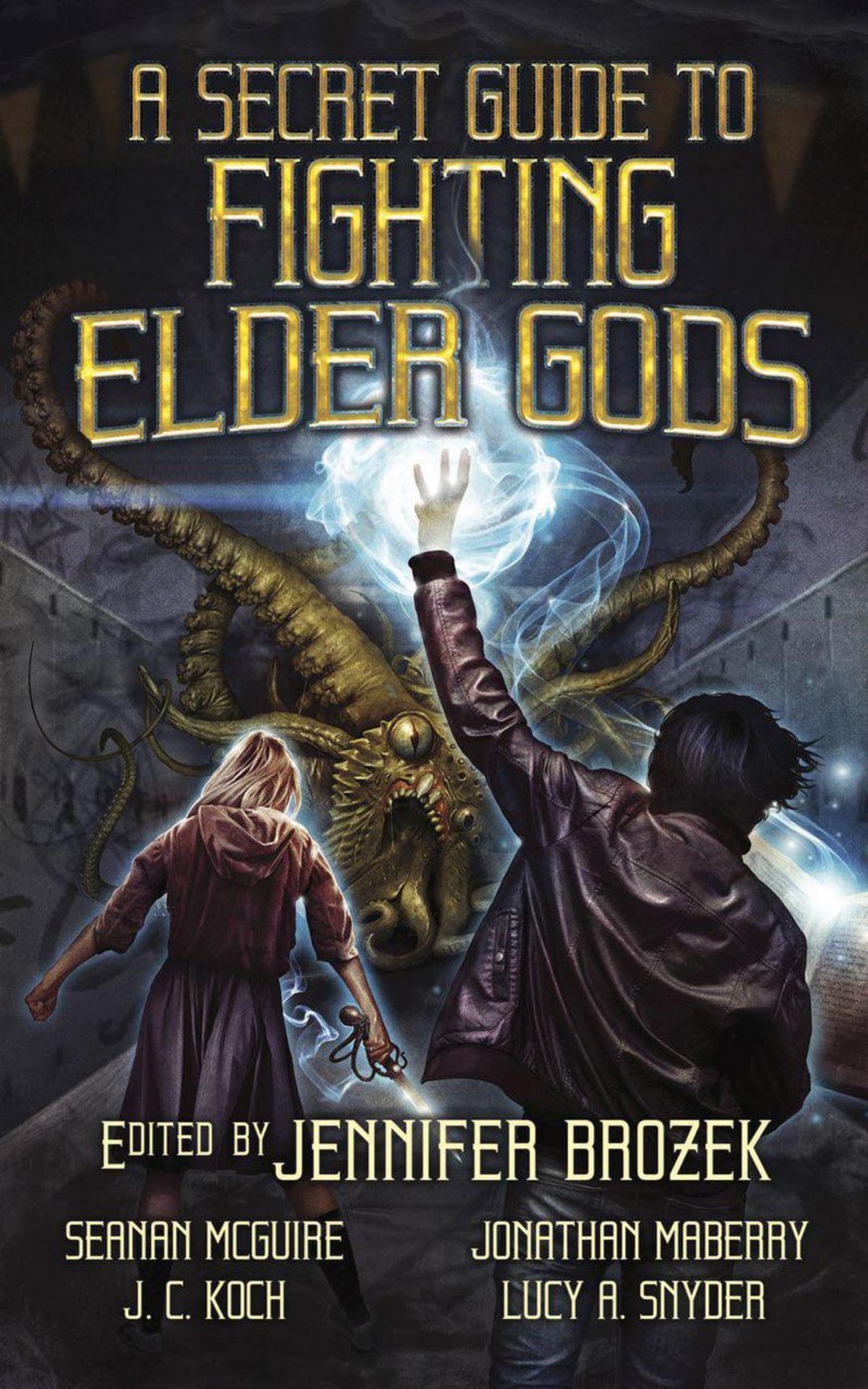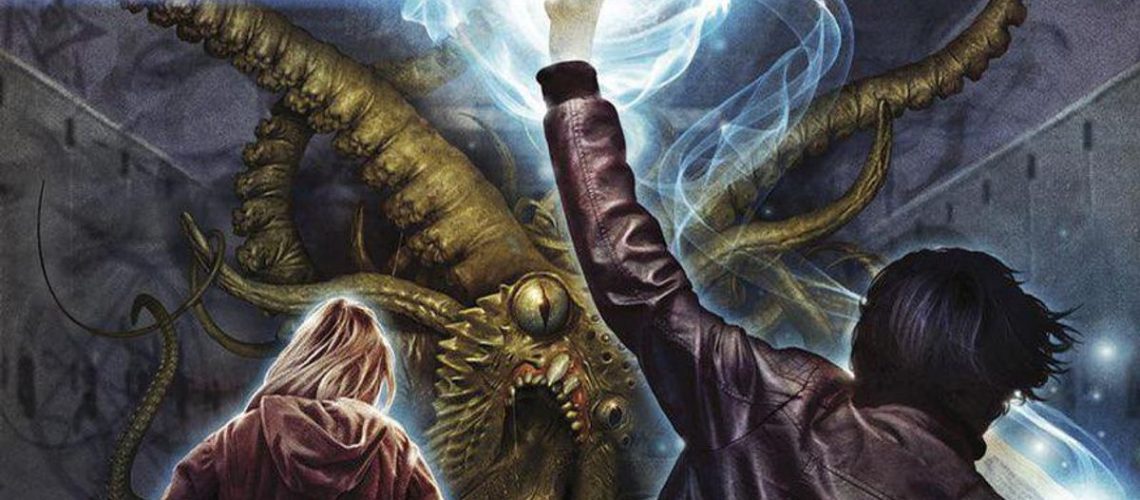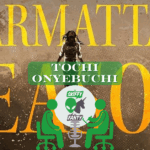The return of the Lovecraft mythos to fiction and popular culture has been a burgeoning tendency in modern day fiction and culture. From Charles Stross’ Laundry Files to plush Cthulhus, the idea of the Mythos is more well known in popular culture than ever. There has also been a surge and rise in the popularity of YA as a subgenre, with teenagers and young adults navigating some rather perilous territory. It makes sense to me that the perilous territory that YA protagonists face might include encounters with Deep Ones, the Dreamlands, Ghouls, and the other terrors inherent in the Mythos. In addition, many of the stories in Lovecraft’s oeuvre are centered around familial concerns — learning one’s heritage, coming to terms with it, rejecting it, or even being possessed by it. Of course, such family dramas can underpin many YA stories, too.
Thus, in A Secret Guide to Fighting Elder Gods, editor Jennifer Brozek marries these two concepts with a selection of stories from a wide range of authors. Like any anthology, the quality and interest of an individual story and author varies for me. Some of the stories stood out for me and showed the promise and possibilities of the form. Overall, I found that the authors and the stories embraced and lived up to the challenge of introducing YA protagonists and themes into the Mythos. The Mythos, upon reflection and after reading these stories, seems to me now like a natural sub-subgenre of fantasy for YA writers to consider.

Brozek’s collection features 13 all-new stories. These include:
- “Away Game” by Seanan McGuire
- “The Icarus Club” by Weston Ochse
- “Stormy Monday” by Chesya Burke
- “Pickman’s Daughter” by Gini Koch writing as J.C. Koch
- “Us and Ours” by Premee Mohamed
- “The Art of Dreaming” © by Josh Vogt
- “Visions of the Dream Witch” by Lucy A. Snyder
- “The Tall Ones” by Stephen Ross
- “Just Imagine” by Tim Waggoner
- “Holding Back” by Lisa Morton
- “The Mouth of the Merrimack” by Douglas Wynne
- “The Geometry of Dreams” by Wendy N. Wagner
- “Being Emily-Claire” by Jonathan Maberry
The collection starts off strong with a Seanan McGuire story (“Away Game”). Starting an anthology with a Seanan McGuire story is like lining up the running back to make an off-tackle rushing play with a strong offensive line backing him up. You can see it coming, but the RB is coming for you and will not be denied. This particular story, as you might guess from a McGuire story, is not about a football team but rather a group of cheerleaders heading toward a game at a rival stadium that so very rarely hosts games. The rival team, you see, almost always plays away, not at home. The reason why the Fighting Pumpkins are going to the Black Goats home field this time and how the cheerleaders fight back is the hook on which this tale hangs. I particularly liked the bond between the cheerleaders and the revelation that they, too, are not to be trifled with. It’s a story that revolves on it’s hook, and I think that it works very well in doing so.
“The Art of Dreaming” by Josh Vogt delighted me because I was not expecting any Dreamlands stories in this volume and was proven wrong. Whilst I expected fights with Deep Ones and the Crawling Chaos, a story of art and dreaming — and of the dangers found there, especially for a young and inexperienced person — really comes across well. Indeed, dreams can be as real as anything, as Harper learns. If the young adult years are when people learn to dream their futures and learn to reach for them, then the symbolism of this story, and how a Dreamlands story really resonates with young protagonists, really manifests. This story contrasts with McGuire’s in its lack of violence and horror and its much more subtle use of the Mythos.
Lucy Snyder’s “Visions of the Dream Witch” is a lovely story set in the swamps of Louisiana that involves possessing beings and temptation. There is a good sense that this is one fraction of a longer set of stories of two young cousins. The pair of cousins’ families have been broken and battered by poverty and drugs, and so there is a real “found family” note to their partnership as they cross paths with the Mythos in the deep swamp. This story ties well with Vogt’s in showing the promise and power of a temptation and reaching for what could be a dark dream. For YA protagonists are often faced with perilous and life altering choices, which the protagonists find themselves faced with those choices in this story.
Tim Waggoner’s “Just Imagine”, like many of the stories in the collection, uses a high school setting, isolation and alienation of its protagonist, Trinity. Trinity’s story revolves around a mysterious power and a temptation from that power to give into it for horrific ends. Teenage years are years of change, and temptation and the lure of power is a theme that goes through many of the stories in the collection, dark bargains and the lure of eldritch abilities. Trinity comes across, to allude to Roger Zelazny’s A Night in the Lonesome October as a young person who could ultimately be an Opener OR a Closer. Trinity, it seems, with her burgeoning abilities, has the power to choose to open the way to those from other realms or to stand against them and shut them out of our realm. The story, ultimately, focuses on her realization of her ability to make that choice.
The collection ends on the story “Being Emily-Claire” by Jonathan Maberry. A strong story to anchor and end the collection, it features monsters in the closet and a teenager unwilling, at first, to have to stand up to far greater monsters than those in her closet. Like many of the stories in this collection, it centers around high school, and Maberry uses Emily-Claire’s unease with her new surroundings as a metaphor for dissociation, disaffection, and the general unease that teenagers have in growing up. This unease ultimately leads Emily-Claire to discover and contact the evil that is seeping into her school — and seeks to seep into her as well. Coming of age is a common theme in YA fiction, and the author leverages that to excellent effect. Emily-Claire learns that to come of age is to become aware of one’s own power and one’s true potential — and to learn to harness it. This is a theme we have seen before in Waggoner’s story, and it is a theme found in other stories in the collection as well.
In the end, I wondered why no one had thought to come up with such an anthology before. I think once shows like Buffy the Vampire Slayer came on the air, this the idea of marrying the cosmic horror of Lovecraft with YA seemed to be a logical fusion. I think it really took for Lovecraft to be looked at as source material for other writers in a broad way to make this fusion a reality. It really did take the Strosses and the Khaws and the plushies for writers to realize that growing up, becoming who one is, discovering one’s potential, dealing with demons internal and external are all YA concerns that could and do translate well into an eldritch, Lovecraftian mode. The rise of Neo-Lovecraftian fiction and authors taking and reclaiming Lovecraft’s mythos and turning it from some of its very problematic aspects into something better certainly was the final piece needed to make this possible. Brozek’s editorial hand shows that the concept has legs, and her choice of stories is indicative of a strong editorial hand and distinct but not overwhelming editorial voice.
A Secret Guide to Fighting Elder Gods was released by Pulse Publishing in April 2019. It is available where all good books are sold.








One Response